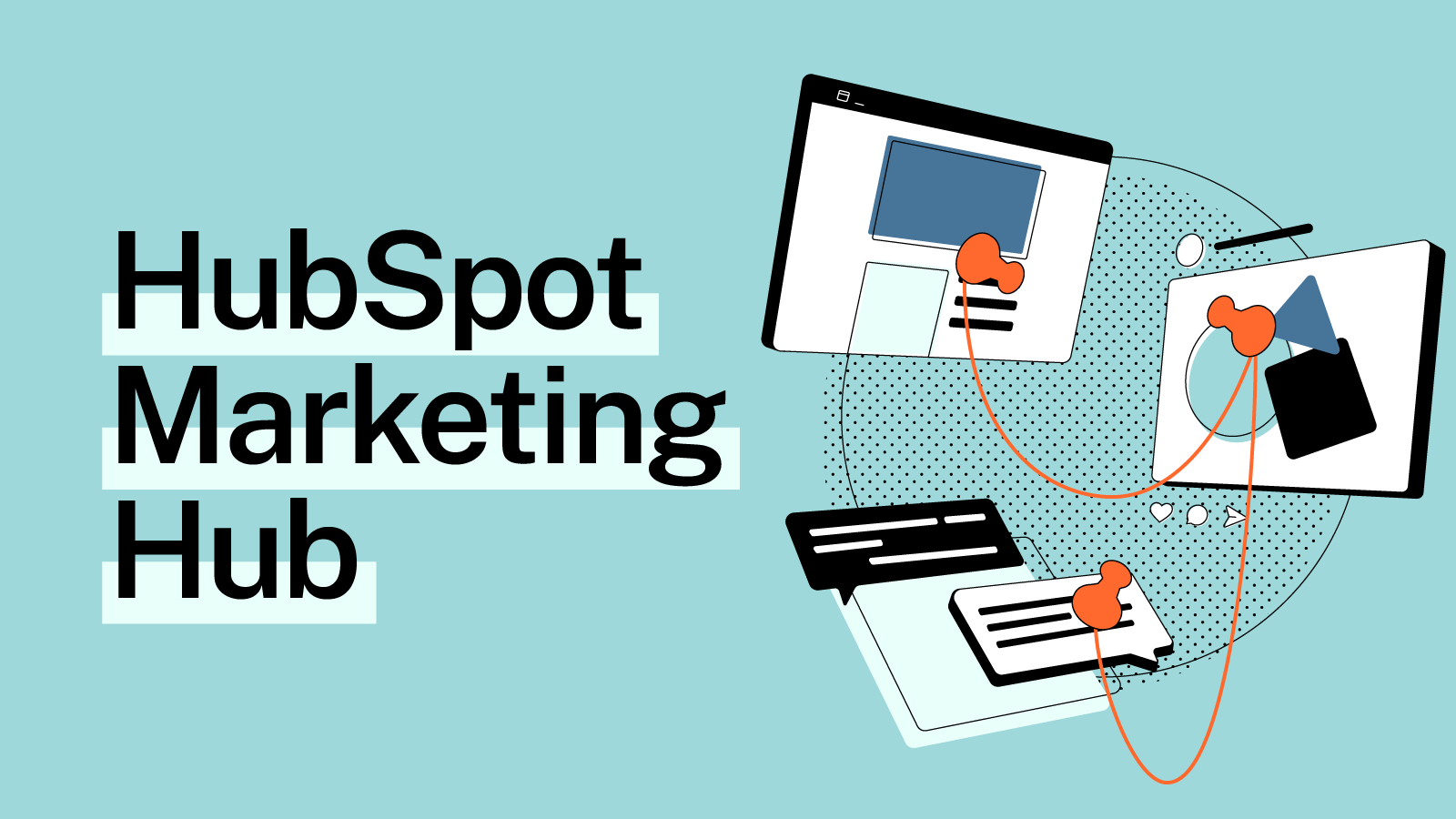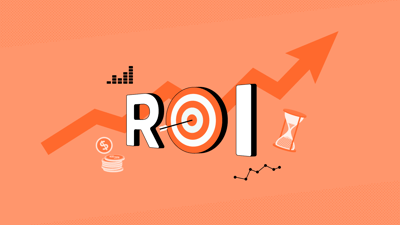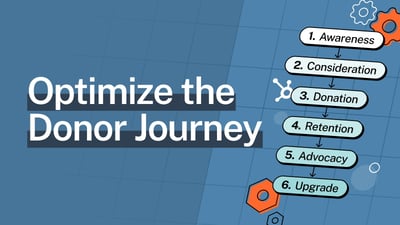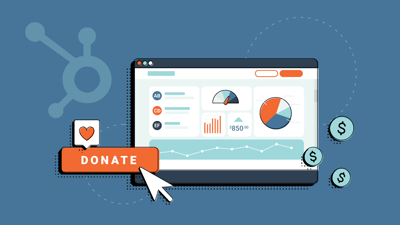How to Use HubSpot Marketing Hub to Grow Your Nonprofit

Today, scaling a nonprofit has to include technology that captures and responds to audience preferences.
Once those constituents are reached, that same technology must then engage them to foster an impactful, trusted connection. That’s the surest way to prompt vital support like donations and volunteering.
When we talk about this type of growth—real, transformative, significant—we just have to mention HubSpot’s Marketing Hub in the same breath.
Already sweet with its 40 percent nonprofit discount, HubSpot’s Marketing Hub features a powerful, easy-to-use marketing automation platform that enables marketers and fundraisers to reach each constituent on the right channel with the right message at the right time.
No matter who visits your website and when, the number of visits you get, how high the engagement on your social media, or how many subscribe to your newsletter, HubSpot can do your heavy lifting.
For example, any registered behavior can trigger an automated workflow you set up in advance, like sending a timed email series to nurture new leads, requesting a monthly donation from a supporter who’s made two or more gifts in the last 12 months, adding or updating a contact, creating a to-do task, and so on.
Plus, HubSpot provides invaluable analytics like touchpoint performance and conversion rates by channel to refine your marketing campaigns.
HubSpot Marketing Hub can save you a lot of time and resources otherwise spent manually performing such actions—if your team can get to them at all.
The key is to implement Marketing Hub according to your nonprofit’s unique needs, which is where CauseMic comes in. We’re HubSpot’s leading nonprofit implementation partner, evidenced by them requesting us to build their nonprofit demo portal called The Giving Sprocket.
Aside from the marketing automation platform, HubSpot also has an integrated constituent relationship management system (CRM). A CRM is a repository of contacts and information about them, like their giving history, interests, whether they volunteer or support you in some other way, and so on.
HubSpot’s Marketing Hub draws on CRM data to communicate appropriately with your various audiences. However, HubSpot’s own CRM isn’t required, as Marketing Hub can integrate with other CRMs like Salesforce.
Various CRMs present different capabilities and limitations. You just have to know whether HubSpot is right for you.
How to determine if HubSpot is the right CRM for your nonprofit
Let’s break this down into four general steps:
Step One—Gather and document your nonprofit CRM requirements by interviewing stakeholders and annotating their ways of working, must-haves, nice-to-haves, and current pain points.
Step Two—Watch our demo of HubSpot for Nonprofits and learn if its capabilities match up with your organization’s requirements. If you like, contact us and we can talk more about your unique needs.
Step Three—Learn the price tag of implementing HubSpot for nonprofits, including platform cost, your implementation partner cost, and any recurring costs to maintain your tech stack.
Step Four—Evaluate HubSpot against other nonprofit CRMs. Vet your options using your stakeholder requirements and budget by scheduling demos with one or two other nonprofit CRMs for comparison.
Initial cost versus long-term savings, ease-of-use, performance, customization, applicable features—all of these factors are important but can be overwhelming. We have extensive knowledge of the various CRMs and are happy to help you evaluate yours.
In many nonprofit cases, two CRMs bubble up to the top for consideration: HubSpot and Salesforce.
HubSpot CRM vs. Salesforce CRM: Which way to go?
Sometimes it's best to stay in the HubSpot ecosystem with both the marketing automation platform and CRM, which we often recommend.
It's an easy-to-use CRM that offers terrific contact management capabilities, segmentation and personalization, revenue tracking, integration with fundraising platforms, and robust reporting.
However, (a) it can only store contacts who have an email address (sorry, direct mail), (b) it can only do basic report summaries, (c) it cannot merge contacts with multiple email addresses, and (d) it doesn’t permit soft crediting.
None of which are problems with Salesforce. So if HubSpot’s limitations are a dealbreaker, it makes sense to marry the HubSpot Marketing Hub and Salesforce CRM.
In fact, we believe this HubSpot-Salesforce combo is a winning solution for nonprofits.
How the HubSpot + Salesforce integration enhances your nonprofit’s operation
Teaming Salesforce CRM with the HubSpot Marketing Hub creates a powerful fundraising tool for nonprofits.
Salesforce offers out-of-the-box functionality with things like custom rollups, household modeling, and soft credits.
And the HubSpot Marketing Hub provides a powerful marketing automation platform that enables hyper-efficient engagement across multiple channels.
The HubSpot and Salesforce integration provides a seamless fit, combining the strengths of both systems.
It allows for syncing contact records, identifying and syncing donors, volunteers, and other stakeholders, and syncing Salesforce opportunities to HubSpot deals.
The HubSpot-Salesforce integration is reliable and regularly updated as needed. (However, it’s important to carefully consider what data and objects should be synced to avoid system complexity and performance issues.)
Regardless of which CRM you choose, the HubSpot Marketing Hub can be a powerhouse for igniting exponential growth.
How to use HubSpot Marketing Hub to increase revenue at your nonprofit
In a nutshell, content tailor-made for each donor helps inspire giving.
So HubSpot enables a personalized, audience-led approach, which means serving apt content from which your donors can benefit. That’s a straight line from them to their personal reasons for giving.
And because HubSpot is multi-channel capable, you can customize both content and communication methods to reach supporters where they’re at in their giving lifecycle.
To really maximize your impact (how about a 40% leap in online revenue?), integrate Fundraise Up, the number one giving platform for nonprofits on HubSpot. More about that here.
So—you use HubSpot to personalize, segment, communicate, and connect in order to steward donors into giving. And then you can evaluate performance with a clear understanding of what’s an effective use of your team’s time when producing content that converts.
How HubSpot Marketing Hub can measure your return on investment
CauseMic can configure HubSpot for your nonprofit to be able to track the three most important key performance indicators (KPIs) for online fundraising: Website traffic, conversion rate, and average gift amount.
With HubSpot’s revenue attribution model, you can not only see how much was raised from a specific channel (like an email or text message), but you can actually spread a donor's total lifetime value across all of the touch points.
This powerful feature permits nonprofits to see the marketing ROI from all efforts in easy-to-read reports. Once set up, it’s a snap to make sense of the data and act upon it.
Like creating the best paths for stewarding your donors.
How to use HubSpot Marketing Hub to automate donor journeys
The HubSpot Marketing Hub allows you to build workflows (or, sequences of actions) that are activated automatically by particular events. You can then engage individuals across multiple channels, including email, social media, text, and even task out direct mail sends.
Let’s say someone becomes a first-time donor for your nonprofit. The donation triggers the following workflow, with specific timing between each action:
- Send a personalized email welcome and thank you
- Follow up with email about your nonprofit, mission, and ways to get involved
- Engage the donor on social media via targeted ads
- Share personalized content like blogs or videos based on their interests
- Send a direct mail to promote a specific fundraiser
- Set up automated donation reminders via texts
- Deploy a special giving message through paid ads
In addition to configuring any number of automated journeys, you can use HubSpot’s reporting to identify what’s working and what’s not.
For example, you can A/B test whether sending six emails within two weeks is more effective at converting one-time donors into monthly givers than sending three emails.
* * * * *
Whether it’s paired with its own CRM or some other like Salesforce, HubSpot Marketing Hub is a powerful, easy-to-use marketing automation platform.
And when effectively implemented for your nonprofit’s unique needs, it can be a true catalyst for supercharged growth.
Book a free strategy call with us today to see if HubSpot is right for you.





